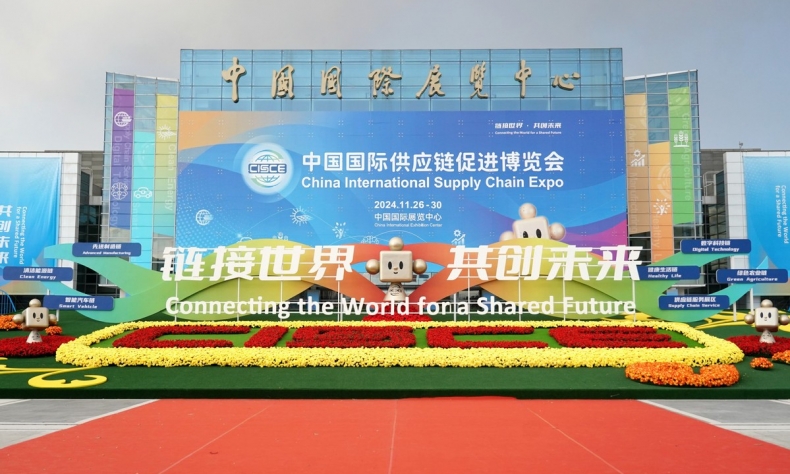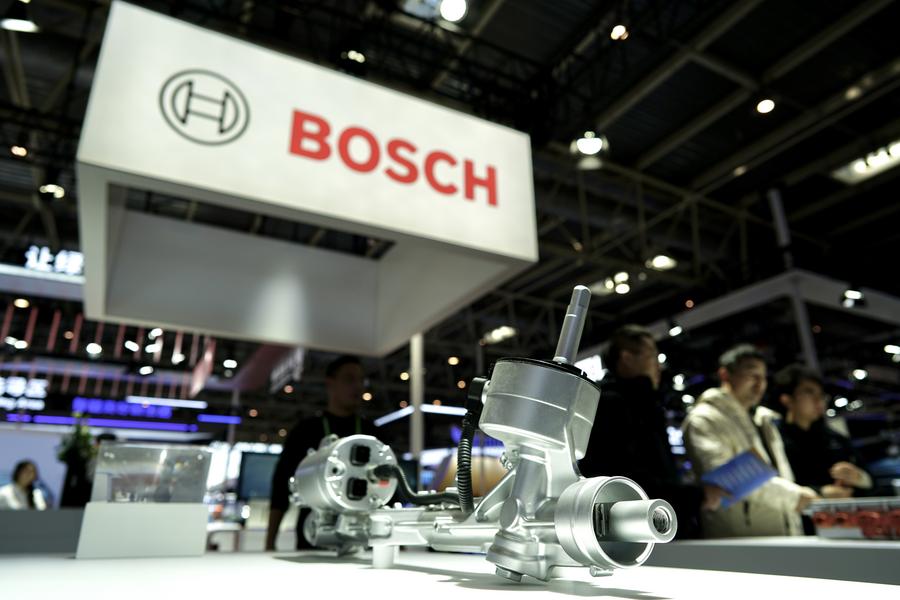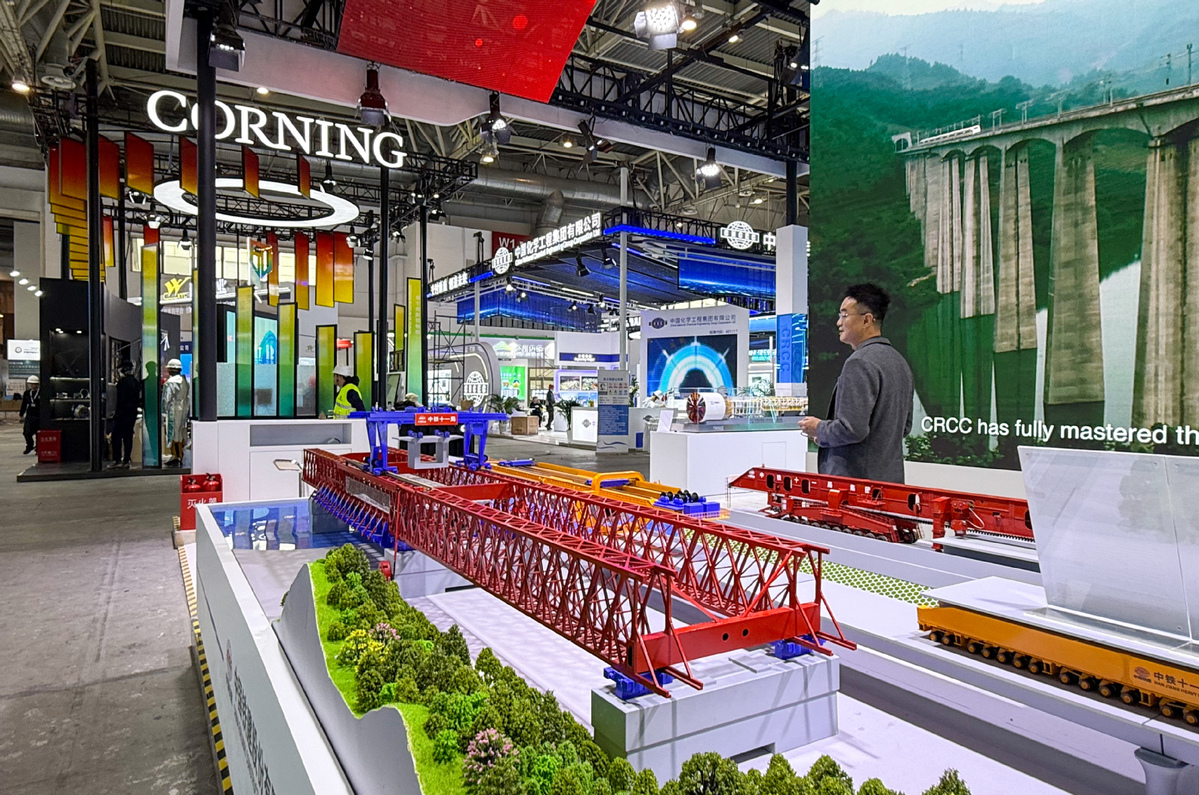Connecting the World

The China International Supply Chain Expo is an international public good created by China as it launches a higher level of opening-up. For foreign companies, probably what they value most about the expo is the exchange and cooperation opportunities it provides.
The presence of over 200 international exhibitors at the second China International Supply Chain Expo (CISCE) in Beijing demonstrated what the global market thinks of the world’s second largest economy.
Themed “Connecting the World for a Shared Future,” the expo, held from November 26 to 30, 2024 had international participants from nearly 70 countries, accounting for 32 percent of the more than 600 exhibitors. It displayed new technologies, products, and services, underscored the deep integration of upstream and downstream firms across various global industrial and supply chains, and emphasized the appeal of the huge Chinese market.
Convenience on the Doorstep
As the world’s largest manufacturer and goods trader, China is a pivotal part of global supply chains. It is the only country whose industrial system possesses all the categories mentioned in the UN International Standard Industrial Classification of All Economic Activities, topping in the output of many industrial products.
For example, a single road in Taicang, a county-level city in Jiangsu Province in east China, has enterprises forming an entire industrial chain. One plant produces key parts for new-energy vehicles (NEVs), which are then taken to another just a few kilometers away for assembling, greatly improving operation efficiency. Such convenience on its doorstep has enabled Tesla’s gigafactory in Shanghai to roll out a NEV every 40 seconds.
Tesla has benefited greatly from China’s supply chain, achieving its production feat thanks to close collaboration with Chinese suppliers, Gang Song, Tesla’s vice president of manufacturing, said. At the gigafactory, 95 percent of the parts are locally sourced.
This demonstration of China’s industrial capacity explains why foreign enterprises are still flocking to establish plants in China despite naysayers. German multinational engineering and technology company Bosch, the largest automotive supplier in terms of revenue, recently inaugurated its NEV-related joint venture (JV), United Automotive Electronic Systems Co., in Taicang with local partner SAIC Motor-backed Zhong-Lian Automotive Electronics. The JV will produce eAxles, a core unit of electric vehicles (EVs), which will be supplied to vehicle manufacturers just a few kilometers away in the same city.
Nanjing Road, where Bosch’s facility is located, is home to a vibrant automobile supply chain. According to Yin Wei, deputy director of Taicang’s Bureau of Industry and Information Technology, around 70 percent of auto parts can be sourced locally in Taicang. The comprehensive infrastructure and advantageous location – Taicang, a coastal city also endowed with an excellent river port, neighbors Shanghai’s Baoshan District and Kunshan, another industrial city in Jiangsu — have made the city a magnet for over 700 automobile-related enterprises, which includes more than 200 foreign firms.
At the CISCE, Bosch shared an exhibition booth with XPeng Inc., a leading smart EV manufacturer based in Guangzhou in south China, global mining group Rio Tinto, and China Baowu Steel Group Corporation. It displayed the close collaboration of companies in the automobile industrial chain, from raw materials and parts to the final vehicle assembly, showing the advantages of China’s integrated industrial ecosystem.

Bosch showcased many of its core technologies in the smart car supply chain, including hydrogen fuel cells, electrification products, after-sales services, and innovative solutions for smart control and driving safety in sports and racing cars. It also displayed the intelligent integrated braking system and the new-generation driving safety system for the new Xpeng P7+ model, which the company describes as providing higher safety and intelligence.
China is now the world’s largest automobile market and exporter. “For a growing market as large as China, an innovative and robust supply chain system, as well as the coordination and cooperation of upstream and downstream industries, are the key to its continued successful development,” Xu Daquan, Bosch China’s president, said. “Bosch has always adhered to the strategy of ‘rooted in the local market and serving the local market’ in China.”
Bosch’s close collaboration with local partners has boosted the development of China’s automobile industry chain. As part of their strategic cooperation, Bosch and Tencent are jointly exploring using intelligent network technology, including vehicle operating systems, cloud platform services, and data security solutions, for the intelligent transformation of the Chinese automaking industry.
Opportunity to Connect
The expo is an international public good created by China as it launches a higher level of opening-up. For foreign companies, probably what they value most about the expo, the world’s first national exhibition themed on supply chains, is the exchange and cooperation opportunities it provides. It presents China’s complete and comprehensive supply chain system so that enterprises can find synergistic supply chain partners for domestic as well as global business.
The guest list, which included many multinational corporation CEOs, showed the strong appeal of the expo, as well as the huge demand for cooperation in global industrial chains. Sixty percent of the exhibitors were Fortune 500 and other leading companies in different industries.
More than 70 new products from companies including Maersk, Sumitomo Electric, and Zhejiang Qiangnao Technology made their debut at the expo while multinationals like Apple, Tesla, Qualcomm, and Starbucks showcased their breakthroughs.
Though the exhibition area was expanded from 100,000 square meters in the first edition to 120,000 square meters, it was still hard to get a booth.
Xinhua quoted Michael Schumann, chairman of the Board of the German Federal Association for Economic Development and Foreign Trade, as saying, “In the past, parts were often imported from Europe. Now, numerous European companies are moving their supply chains to China, creating models of ‘in China, for China’ and ‘in China, for the world.’” Schumann also said that many European companies are localizing their production in China to enhance efficiency.

As a manufacturing powerhouse, China boasts an efficient and comprehensive supply chain system. Nearly all product parts can be sourced in the country efficiently and at a low cost. The vibrant industrial chain is a key factor driving many multinational corporations’ continued investment in the Chinese market. The robust ecosystem boosts foreign companies’ confidence to expand their presence in China, said Andreas Schmitz, president of the Dusseldorf Chamber of Industry and Commerce. Schmitz also lauded China’s supply chain system for its flexibility and resilience.
The CISCE displayed complete industrial chains, providing cooperation opportunities for upstream and downstream firms. For example, to assemble a NEV, more than 10,000 pieces of software and hardware are required. From core raw materials and key components to batteries, motors, and electronic controls, and to smart connected vehicle products and related services, the expo covered the entire cycle of smart car production.
Tesla exhibited its Model 3 and Model Y EVs manufactured in its Shanghai factory, along with batteries and humanoid robots. Supported by over 400 Chinese suppliers, the Shanghai gigafactory manufactured over half of Tesla’s global deliveries during the first three quarters of 2024.
For all the threatening rhetoric about “decoupling” and “breaking chains” by some Western politicians and media, the presence of many U.S. companies testified to the benefits of supply chain cooperation.
The supply chain highlights the strength of China’s industrial system and can become a core competitive edge for companies, Zhang Yihao, president and CEO of GE Healthcare China, said. GE Healthcare showed up with nearly 20 key suppliers at the expo, showcasing their advanced medical equipment like CT scanners and molecular imaging products. Only through close cooperation can the supply chains remain stable and efficient and become “win-win chains,” Zhang said.
From 2014 to 2023, the global supply chain connectivity index increased from 0.271 to 0.732; from 2018 to 2023, the global supply chain promotion index rose from 0.27 to 0.66. By promoting infrastructure connectivity, advancing the digitalization and intelligence of supply chains, and promoting free trade agreements, China has facilitated the global supply chain.
The influx of foreign investors shows their confidence in the Chinese market. China is further opening up by lifting all access restrictions on foreign investment in the manufacturing sector, significantly shortening the negative list of foreign investment access, and improving service for foreign investment.
The message is clear. China will continue to take concrete actions to ensure stable and unimpeded global industrial and supply chains, Chinese Premier Li Qiang said at a symposium in November. And in his address at the expo’s opening ceremony, Vice President Han Zheng reinforced the message, saying China will adhere to the right course of economic globalization, and enhance business and industrial capacity cooperation with other countries for a positive interplay among industries and shared benefits.
 Facebook
Facebook
 Twitter
Twitter
 Linkedin
Linkedin
 Google +
Google +










